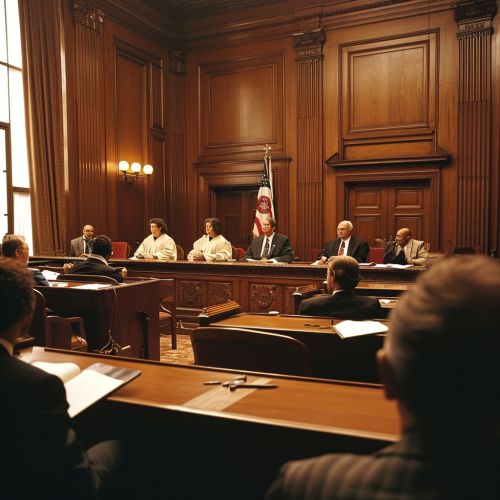Legal Liability
Introduction
Legal liability refers to the legal responsibility or obligation that is enforced by a court of law. It is the state of being legally responsible for something, such as a debt or obligation. Legal liability can arise from various areas of law, such as contracts, torts, and criminal law. In general, a person is legally liable when they breach a duty or violate a law, and this breach or violation causes harm or damage to another person or entity.
Types of Legal Liability
There are several types of legal liability, including tort liability, contractual liability, and criminal liability.
Tort Liability


Tort liability arises when a person's actions or inactions cause harm or damage to another person or their property. This can include physical harm, emotional distress, or financial loss. The person who caused the harm (the tortfeasor) can be held legally liable for the damage they caused. This is often through the payment of damages to the injured party.
Contractual Liability
Contractual liability arises when a party to a contract fails to fulfill their obligations under the contract. This can include failing to deliver goods or services, not paying for goods or services, or not performing other duties specified in the contract. The party who breaches the contract can be held legally liable for any damages caused by their breach.
Criminal Liability
Criminal liability is a type of legal liability that arises from the commission of a crime. A person is criminally liable when they commit a criminal act and are found guilty by a court of law. Criminal liability can result in a variety of penalties, including fines, imprisonment, probation, and other forms of punishment.
Determining Legal Liability
Determining legal liability can be a complex process that involves several steps. These steps can include identifying the duty of care, determining whether there was a breach of that duty, and assessing whether the breach caused harm or damage.
Duty of Care
The first step in determining legal liability is identifying the duty of care. This is the legal obligation that a person or entity has to avoid causing harm to others. The duty of care can arise from various sources, such as laws, contracts, or the general principles of negligence.
Breach of Duty
Once the duty of care has been identified, the next step is to determine whether there was a breach of that duty. A breach occurs when a person or entity fails to meet their duty of care. This can include acts of negligence, recklessness, or intentional wrongdoing.
Causation
The final step in determining legal liability is assessing whether the breach of duty caused harm or damage. This involves proving that the breach was the proximate cause of the harm, and that the harm would not have occurred but for the breach.
Defenses to Legal Liability
There are several defenses that can be raised to avoid or limit legal liability. These defenses can include contributory negligence, assumption of risk, and others.
Contributory Negligence
Contributory negligence is a defense that can be raised in a tort case. It involves arguing that the injured party was partially at fault for their own injuries. If successful, this defense can reduce the amount of damages that the defendant is required to pay.
Assumption of Risk
Assumption of risk is another defense that can be raised in a tort case. It involves arguing that the injured party knowingly and voluntarily assumed the risk of harm. If successful, this defense can completely bar the injured party from recovering damages.
Impact of Legal Liability
Legal liability can have significant impacts on individuals and businesses. These impacts can include financial loss, reputational damage, and potential criminal penalties.
Financial Loss
One of the most direct impacts of legal liability is financial loss. This can include the payment of damages, legal fees, and other costs associated with litigation.
Reputational Damage
Legal liability can also result in reputational damage. This can occur when a person or business is found liable for wrongdoing, causing harm to their reputation and potentially affecting their future business or personal relationships.
Criminal Penalties
In cases of criminal liability, the impacts can include criminal penalties. These can include fines, imprisonment, probation, and other forms of punishment.
Conclusion
Legal liability is a complex area of law that involves many different elements and considerations. It can arise from various sources, including torts, contracts, and criminal law, and can have significant impacts on individuals and businesses. Understanding the principles of legal liability can help individuals and businesses navigate the legal system and avoid potential liability.
